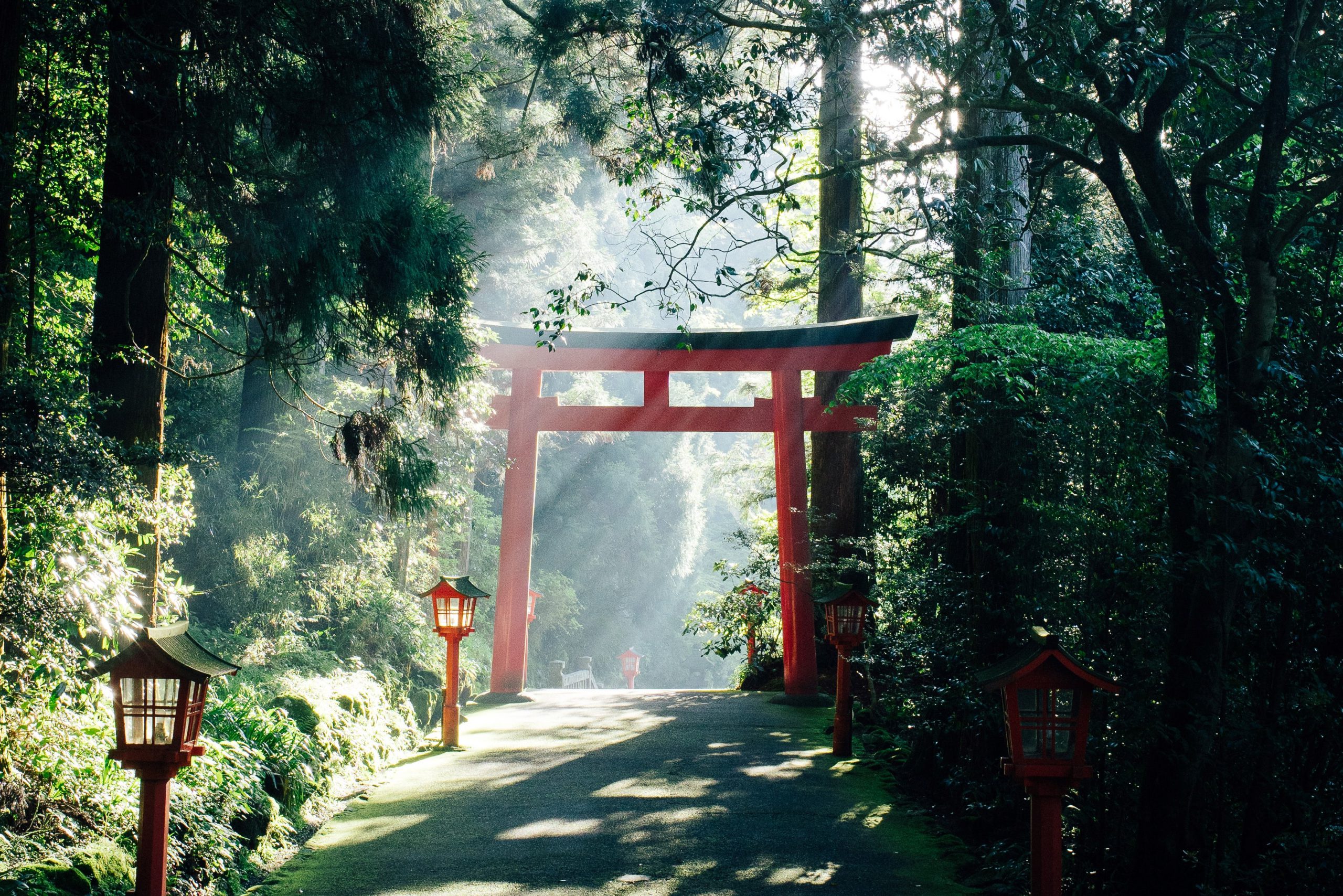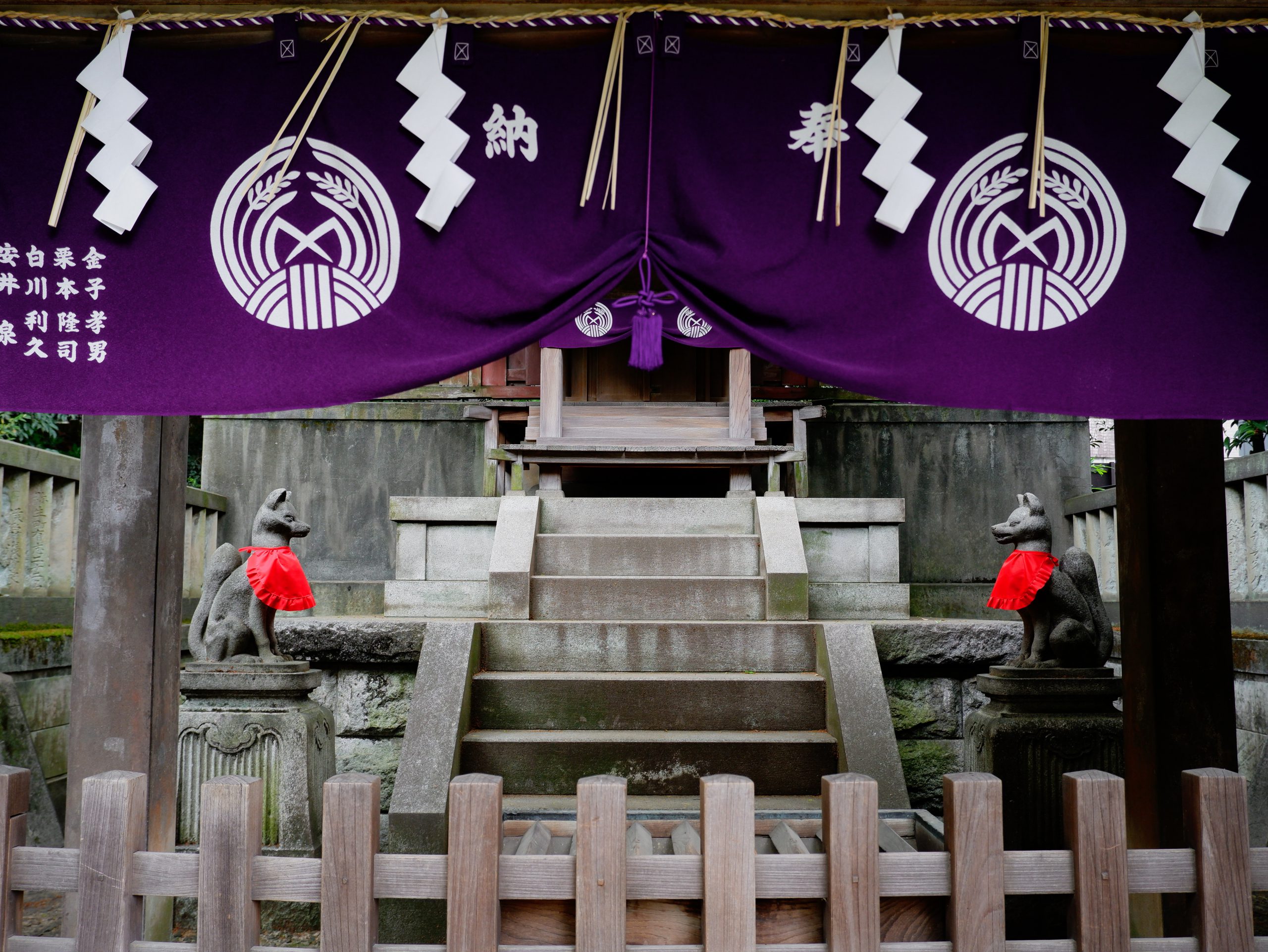Have you ever been wondering what is a giant red gate which generally stands at the entrance of Shinto shrines in Japan? It’s called Torii (鳥居), which is recognized as a symbolic structure that can be found at most of the Japanese shrines. While they serve as a popular photo spot to take memorable pictures such as Fushimi Inari Shrine in Kyoto for tourists, the original role and meaning of them are almost forgotten even among Japanese people. Reading through this article will help you understand the secret stories behind the origin of Torii gates and the meaning of their colors!
Origin of Torii gates
In spite of the archaeological research which has proposed several theories so far, the origin of torii gate still remains unclear. These theories include the idea that it was originally derived from other countries such as China and India. Others support the idea that it originally appeared in Japanese ancient mythology Kojiki (古事記). In that mythology, the story is told that when the goddess of the sun, Amaterasu Omikami, hid behind the cave and the sun didn’t come up, eight-million gods tried to open the gate in several ways. It is said that a deity prepared a tree for birds and made them chirp to catch her attention. And that tree became the first torii gate.
Although the origin of the torii gate is a mystery, it is said that the shape of torii gates that we can see today was established around the 8th century.

What’s the role and meaning behind torii gates?
The main role of torii gates is to distinguish the sacred shrine grounds from the human world. In other words, they serve as a boundary which separates the sacred space from the mundane world where humans live. Once you walk across the torii gate, it means that you have entered the sacred, special space.
Apart from historic shrines, you might be able to run into beautiful torii gates that suddenly appear in unexpected spots in Japan. It includes nature spots such as the base of famous mountains, or along scenic seaside. These torii gates are said to embody the deity which is believed to exist in nature, including sacred mountains and the ocean. This belief is called Animism, a Japanese indigenous belief which has a long history.

Different types of torii gates
It is said that there are about 60 kinds of torii gates around Japan but the details of each kind are difficult to recognize. They can also be categorized into the major two types of torii gates. Here are the distinct differences between the two kinds of torii gates.
1. Shinmei type torii gates
Features:
- The upper part of torii gate called kasagi (笠木) is straight.
- Generally don’t have gaku (額) which displays the name of shrine
Famous shrines with Shinmei type torii gates:
- Ise Grand Shrine (Mie prefecture)
- Yasukuni Shrine (Tokyo)

2. Myojin type torii gates
Features:
- Most common wooden torii gate which is generally painted red
- The entire torii gate is relatively curvy (kasagi and pillars are not straight)
- Generally have gaku which displays the name of shrine
Famous shrines with Myojin type torii gates:
- Meiji Shrine (Tokyo)
- Nikko-Toshogu Shrine (Tochigi prefecture)
- Fushimi Inari Shrine (Kyoto)
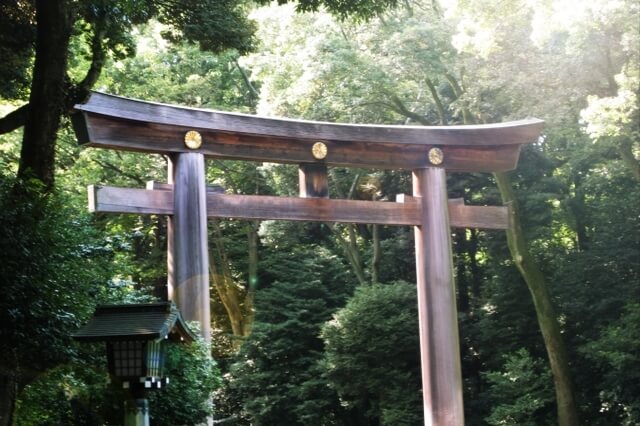
While Shinmei torii features a simple and quaint design, Myojin torii is relatively modern and has the typical appearance of torii gates which many of us know.
Meaning behind colors of torii gates
Red torii gates originated from a unique belief called Shinbutsu-Shugo (神仏習合), which is often translated as the syncretism of Shinto and Buddhism in English. It can be described as a fusion of Shinto and Buddhism which once had a significant influence around Japan. In Buddhism, red is regarded as a color which represents the sacred atmosphere as well as vital force. As a result, ancient people started to paint torii gates standing at shinto shrines with red. Also the red color is believed to ward off the evil spirits and red color is used often for Inari Shrine, which enshrines the deity of harvest.
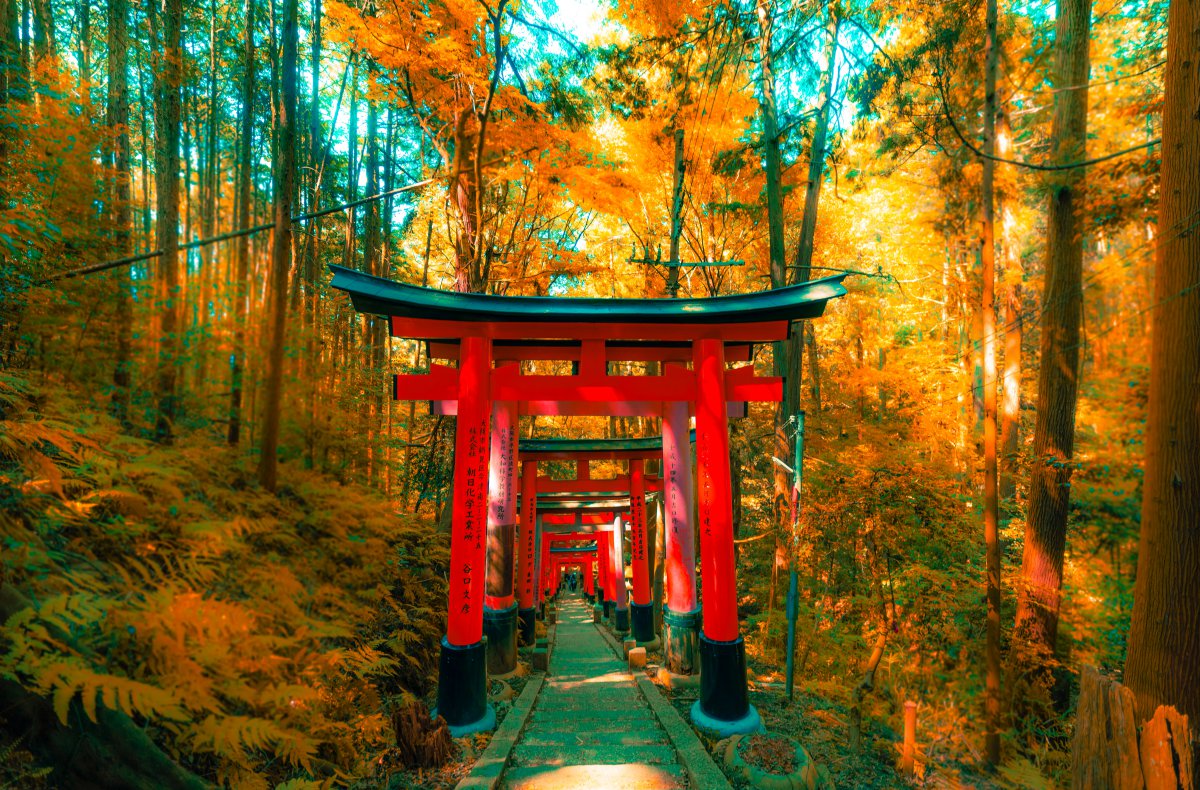
You can also find white torii gates. White is considered as the original color of torii gates which were more common than red until the arrival of Buddhism in Japan. White gives a sacred, pure impression to people and believes to ward off evil spirits. After the separation of Shinto and Buddhism was officially implemented in the Meiji Period, some shrines started to paint over their red torii gates with white again, but the number has never exceeded the red ones even today!

Another fun fact is, not only red and white, there are more colors used for torii gates.
For example, yellow, blue and black torii gates can be found in Japan! These colors are decided by their direction where shrines stand. If the shrine stands in the north, torii gate will be black, in the east it’s blue and in the center it’s yellow.
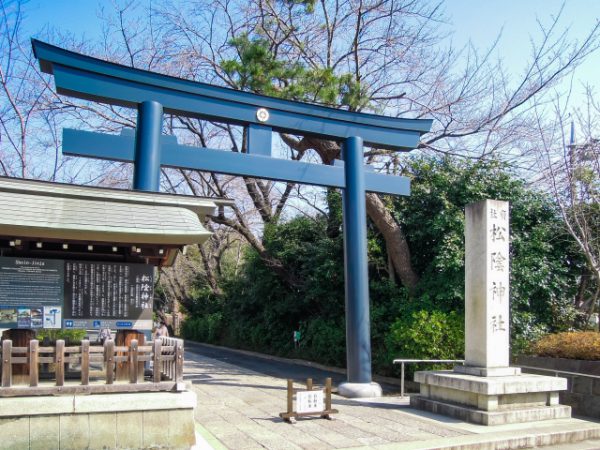
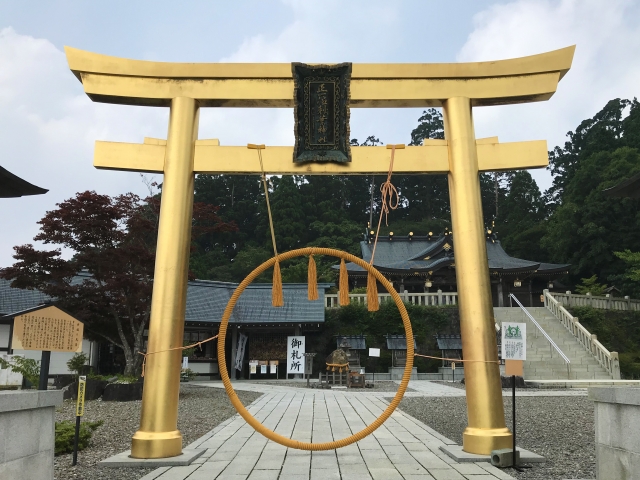
There is even a pink torii gate that matches the color of Shibazakura. It is located in Higashimokoto Shibazakura Park in Hokkaido. This torii gate was painted in pink for decorative purposes, but it’s known as a photogenic spot where a pink torii gate stands beautifully on pink flower carpets. The best season to visit there is in May. Shibazakura blooms from May to June.
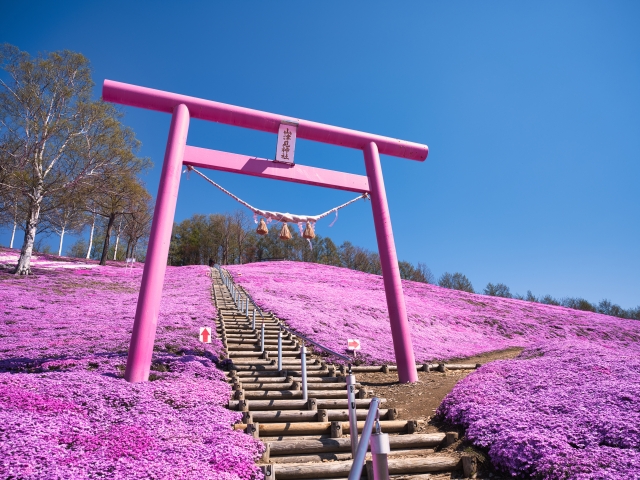
Japan Wonder Travel Tours
Japan Wonder Travel is a travel agency that offers guided tours throughout Japan.
From private walking tours to delicious Food and Drink tours, we can help you organize the best tours just for you! If you want to explore Japan and learn more about the history and backstories of each area you are visiting, our knowledgeable and friendly English speaking guides will happily take you to the best spots!
In addition, we can provide you with any assistance you may need for your upcoming trip to Japan, so please feel free to contact us if yu have any questions or need some help!
▶Tokyo Tsukiji Fish Market Food and Drink Tour
Explore the most lively and popular fish market in Tokyo and try some of the local’s favorite street foods and sake with one of our friendly and knowledgeable English speaking guides!

▶Tokyo 1–Day Highlights Private Walking Tour (8 Hours)
There’s no better way to explore an area than taking a tour with a knowledgeable local guide. You will have the chance to learn about the history and interesting background stories of Tokyo, as well as discover some hidden gems which can be hard to do without a guide.

▶Mt. Fuji Day Trip Bus Tour from Tokyo
Experience the breathtaking views of Mt. Fuji by visiting the highlights of the area on our guided sightseeing bus tour! Departing from Shinjuku in central Tokyo, you can travel comfortably to all of the best spots in the area by bus.

Cultural Experience with Kimono
When you visit a shrine, especially popular shrines or temples in Japan, you may see many people wearing kimono.
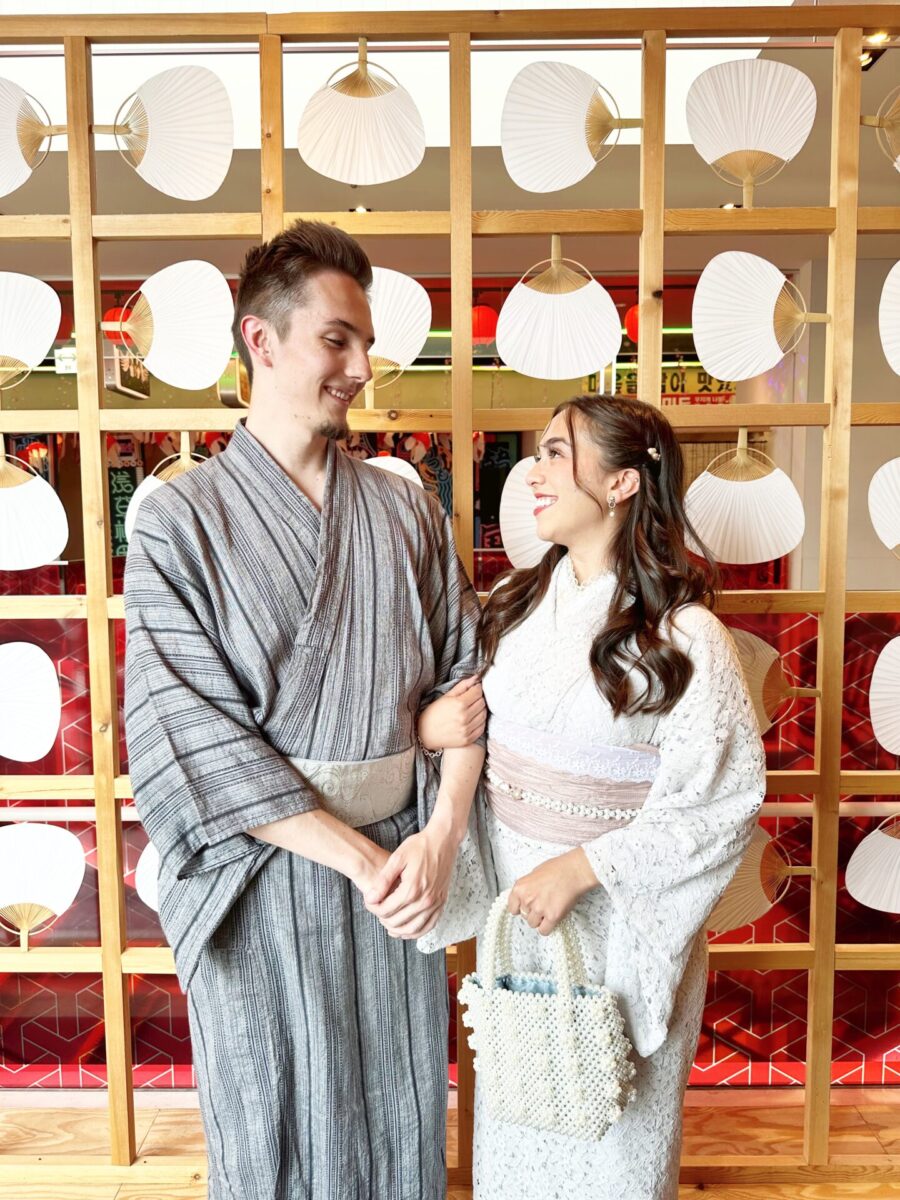
Kimono Rental is Available at Popular Tourist Attractions in Japan!
Discover Japan with a traditional Kimono from Kimono Rental Wargo! Explore cities or join festivals effortlessly starting from just ¥3,300. Our shops are conveniently located in Tokyo, Kyoto, Osaka, Kawagoe, and Kanazawa. Elevate your adventures with the elegance of the kimono and create unforgettable memories in Japan!
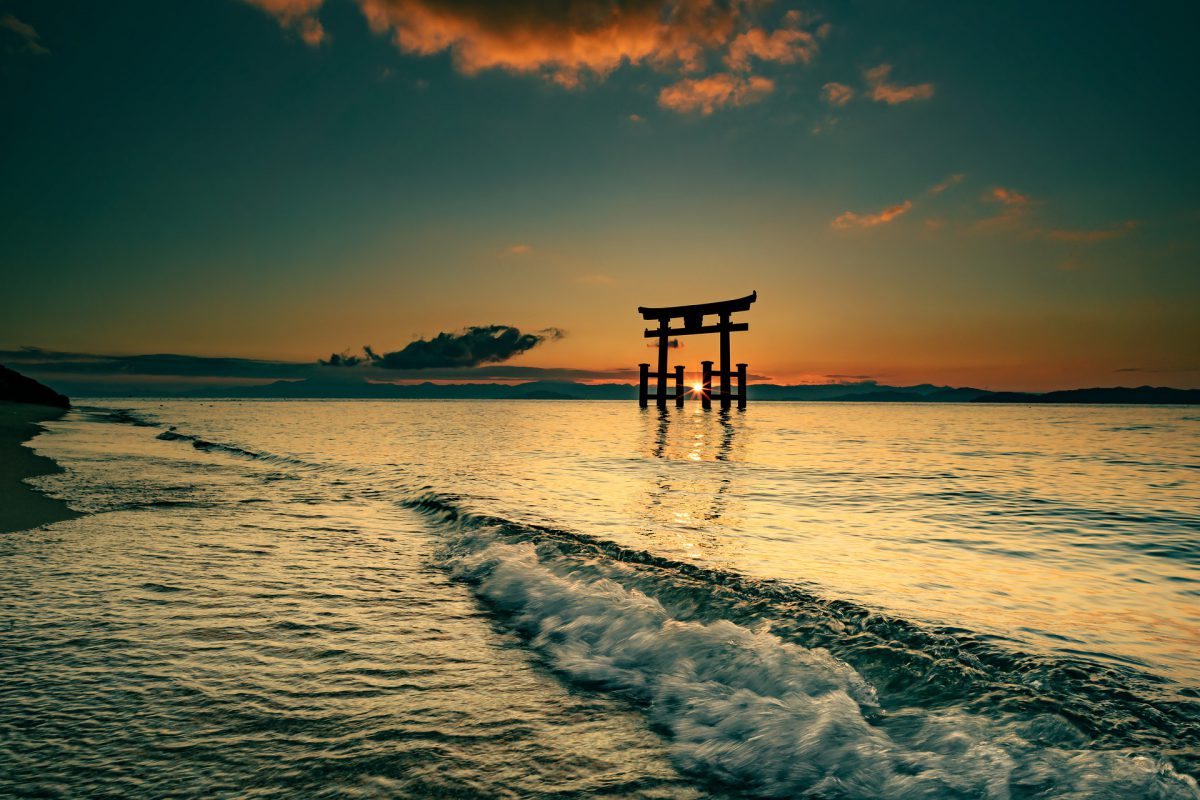
Since the torii gate separates the area between the sacred place and the human world, it’s polite that you bow once before you walk through the gate. You can also see locals do the same.
Hope this article answers your question of what are the torii gates in Japan!
If you want to learn more about Japanese religion, shrines and temples in Japan, the following articles will help you!
- Religion in Japan
- What is Shinto? Finding Japanese Religion in Everyday Life
- How to Pray at Shinto Shrines
- Shinbutsu-Shugo: the Mix of Shintoism and Buddhism in Japan
- An Overview of Shintoism and Buddhism in japan -Difference and History
Follow us on Instagram, Facebook and Twitter for more travel inspiration. Or tag us to get featured!
Happy traveling!
Stay informed of the best travel tips to Japan, the most exciting things to do and see, and the top experiences to have with the Japan Wonder Travel Newsletter. Every week we will introduce you to our latest content.

Miho Shimizu is a Japanese freelance writer settled in Shizuoka with her husband and two rabbits. Fascinated with travelling at the age of 18, she has spent most of her long holidays exploring incredible spots around Japan. Also love to listen to music, draw, and read novels over a cup of green tea.
